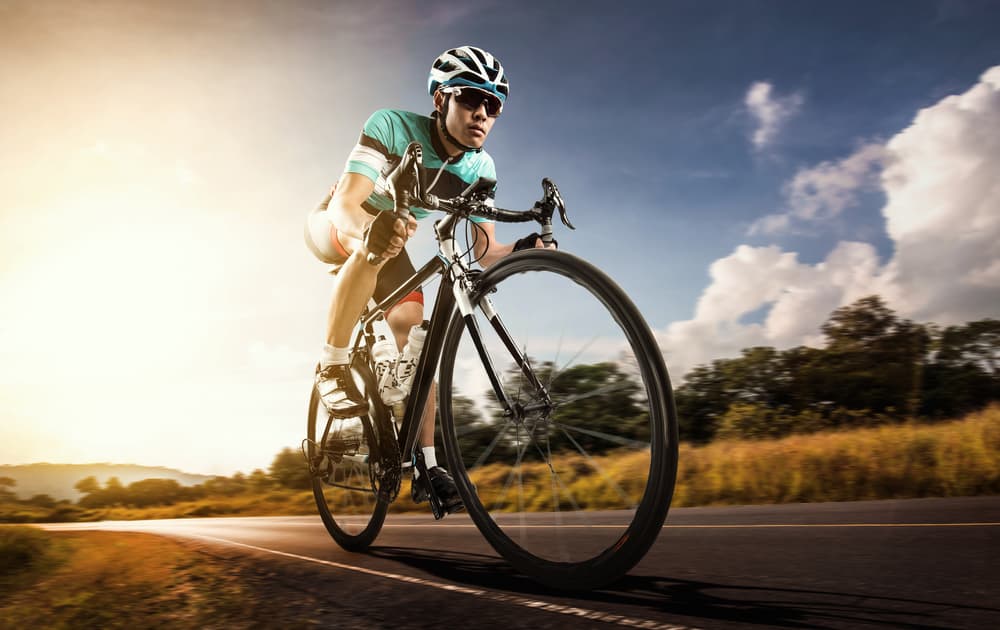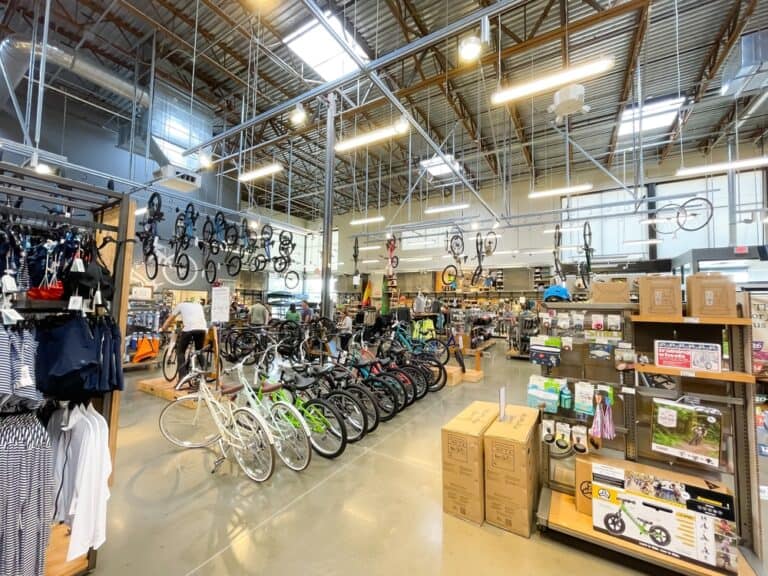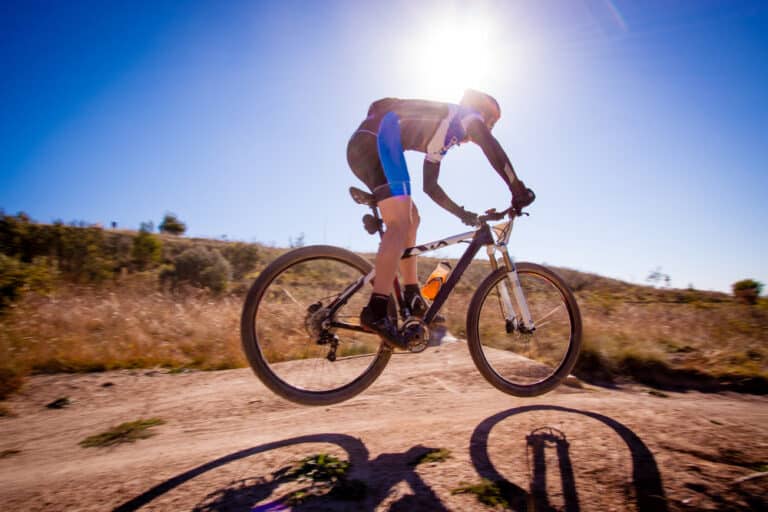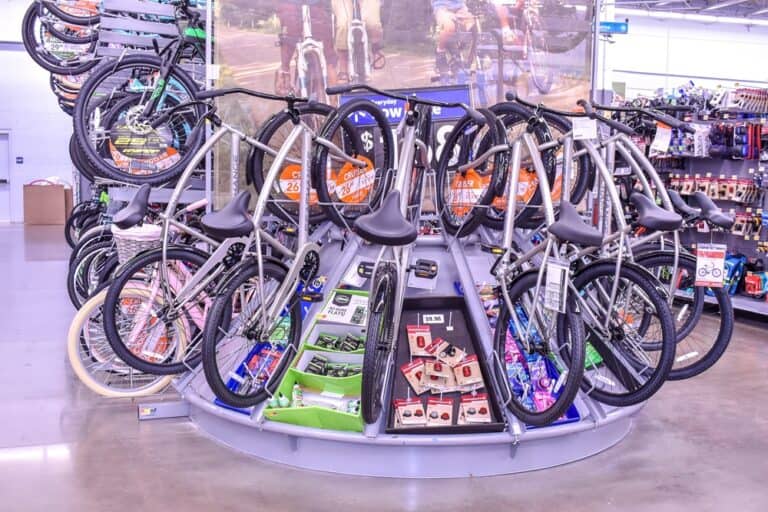How Fast Can You Ride A Bike?

Cycling is a great pick for those who enjoy high-speed activities. But have you ever considered just how fast you can ride your bike? Whether you’re in it for the rush, trying to let off some steam, or training for your next big race, reaching your top speed is an exciting challenge!
How fast you can ride a bike depends on your fitness and competency level and the quality of your bike. Competitive outdoor cyclists can reach a speed of up to 45mph, while indoor cyclists hit speeds of 60 to 70mph. The untrained cyclist pedals at an average of 13mph which can be improved to 20 or 30mph.
The maximum speed of a bike ride isn’t the same for every cyclist or even for every bike. You may already have considered the cyclist’s fitness or sheer quad strength, but have you wondered why even the best-trained professionals have such vastly differing top speeds?
How Fast Can You Ride Your Bike?
Your cycling speed isn’t the direct result of any one most important factor. There are many components involved in propelling a cyclist to their top speed.
Why Training Influences Your Cycling Speed?
Your physical capacity and level (regularity, intensity, and quality) of training are the most direct indicators of the speed you can reach when cycling. The good news is that this leaves a lot of opportunity for improvement with practice!
Cycling requires strength and endurance. So, building a strong and healthy body will cut down your cycling time. Your sheer pedaling force is largely responsible for propelling the bicycle forward, so stronger leg muscles translate to faster speeds.
Endurance relates to the load your body can handle from activity while still performing well. Working muscles require lots of energy and oxygen, and your body needs to get used to meeting these demands. The more you exercise, the more familiar the movements will become, making your body more effective at performing a task like pedaling.
Why Terrain Affects How Fast You Ride Your Bike?
So, your performance on a bike depends on your experience and training, but this also varies according to what kind of cycling you do.
All competitive cyclists follow intensive training plans and take time to reach a professional level. It’s safe to say they have the experience and training to achieve their full potential. Yet, competitive top speeds range anywhere from 45 to 70 mph. That’s because all cycling conditions aren’t equal, and no amount of training can completely level the playing field.
The top outdoor speed with an unpaced bicycle (riding against the wind using only leg power) is 45mph. The outcomes are more complex in contexts like the Tour de France, which features various climbs, straights, and sprints. The track provides resistance and ups the effort required to complete the race.
In these challenging conditions, top speeds average around 27mph overall, with 34mph on the flats, 14mph on the uphills, and up to 40mph top speeds on the sprints.
On the other hand, cyclists competing in velodromes see speeds of 60 to 70 mph. This is because they aren’t held back by wind and weather, uneven terrain, or bankings at unideal angles. These races test the maximum that the cyclist and their bike have to offer without resistance from the environment.
So, if you’re looking to compare your performance to record speeds, you’ll need to test yourself on similar terrain under similar conditions.

How To Train For Speed Cycling?
Training for top performance needs to be targeted and goal-specific. We discussed how your speed is influenced by your strength and endurance and by the resistance from the terrain. The next thing to keep in mind as you train is weight.
Cycling comes down to a simple equation: the less weight and resistance involved, the less effort it takes to propel you forward. This includes you, your bike, and even your clothing.
The main types of training are cardiovascular and weight training. Weight training builds muscle mass, while cardiovascular training conditions the heart and lungs. While biking requires strength in your glutes, quadriceps, hamstrings, and calves, bulking up these muscles will increase the weight you need to lug around.
Instead, try uphill or resistance cycling to increase muscle strength without adding on unnecessary weight. On days you want to get off the bike, focus on cardio training like jogging, which burns fat and builds muscular endurance.
High-intensity interval training (or HIIT) targeted to the lower body will also help increase strength while building stamina.
That said, balance is always key to good health. Having a goal to reduce cycling weight doesn’t mean you have to stick to cardio alone and avoid weights altogether. Any type of exercise has its benefits. It’s up to you to find what’s best for you and helps you reach your goals most effectively.
Reducing Weight To Bike Faster
To continue healthy muscle training, you cannot keep cutting down your body weight indefinitely. Strong muscles need enough fuel to run on, so you’ll need to look at other points to lighten the load.
The easiest place to start is to remove any unnecessary weight from your bike. Are you carrying anything you could replace with a lighter version or leave it at home altogether? For example, bulky bottles could be replaced by lighter water packs.
At this point, some cyclists start considering swapping their regular road bikes for high-performance racing models. However, this is not essential for starters, and you can still develop good technique on whatever is available to you at the time.
How To Reduce Drag To Ride Faster?
We’ve covered how resistance from the terrain can reduce your cycling speed, but your body and bike are also a source of resistance.
Again tying in with proper training, it’s important to learn the correct posture for speed cycling. Your posture influences your aerodynamics on the bike. You want to slice through the air around you as smoothly and effortlessly as possible, with minimal air pressure drag – or resistance from the air hitting you head-on.
This also means wearing the proper cycling gear and clothing. Snug, lightweight cycling gear allows you to move forward with minimal friction from the air moving around you as you pedal ahead.
Conclusion
Top speed is an important and exciting benchmark for many cyclists. How you train and how long you’ve been training greatly impacts the speed you can reasonably expect to reach. Where you train also places different demands on your body, again adding another factor to consider when determining your goal velocity.
Regardless of what is available to you, with some time and a decent amount of training, 20 to 30mph top speeds are well within your reach. If that excites you, you could continue working all the way toward a good 45mph.
References
- https://www.sportsrec.com/317007-why-doesnt-biking-build-lean-muscle.html
- https://www.trainingpeaks.com/blog/why-is-weight-so-important-in-cycling-part-1/
- https://www.bikeradar.com/advice/fitness-and-training/average-speed-cycling/
- https://www.cyclist.co.uk/in-depth/1491/how-fast-can-you-go-on-a-bike






